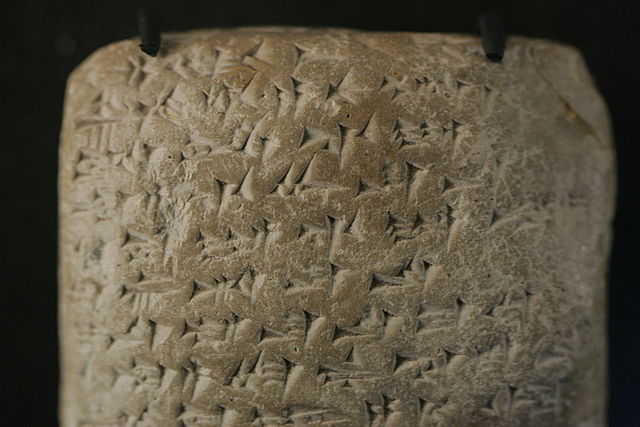Loading AI tools
Cuneiform sign From Wikipedia, the free encyclopedia
The cuneiform Ri sign, or Re,[3] is found in both the 14th-century BC Amarna letters and the Epic of Gilgamesh; it is in the top 25 most used cuneiform signs (Buccellati, 1979) for ri, or re, but has other syllabic or alphabetic uses, as well as the Sumerogram usage for RI (Epic of Gilgamesh).


The ri (cuneiform) sign has the following uses in the Epic of Gilgamesh:[4]
The specific usage numbers for the sign's meaning in the Epic is as follows: dal-(4), re-(56), ri-(372), tal-(70), ṭal-(2), RI-(1).[5]
In the Amarna letters, ri also has a special usage when coupled with the naming of the Pharaoh, as "LUGAL-Ri". Lugal is the Sumerogram translated in the Akkadian language to 'King', Sarru. Thus in the Amarna letters, Lugal is used as a stand-alone, but sometimes supplemented with Ri, and specifically used as Sumerogram SÀR (an equivalent Sumerogram to mean LUGAL) to be combined with RI to make sarru for king. ('The King', as an appellation is sometimes created by adding ma (cuneiform), suffix to the end of a name (Lugal-ma.)
Seamless Wikipedia browsing. On steroids.
Every time you click a link to Wikipedia, Wiktionary or Wikiquote in your browser's search results, it will show the modern Wikiwand interface.
Wikiwand extension is a five stars, simple, with minimum permission required to keep your browsing private, safe and transparent.